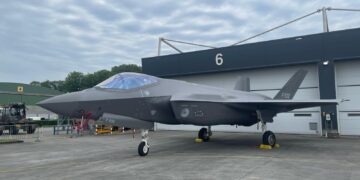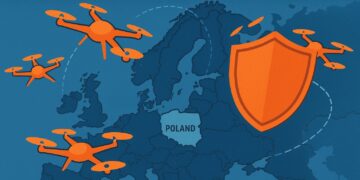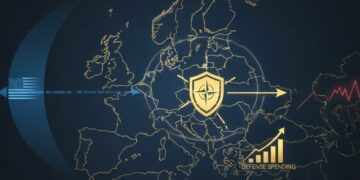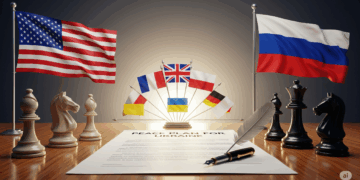Saab in Sweden has recently been selected to coordinate a new NATO project focused on the underwater domain. For this initiative, the company will work alongside twelve NATO countries with coastlines and strong maritime interests. The timing is no coincidence. With different navies operating separate systems, growing Russian activity near critical undersea cables, and the rapid rise of autonomous underwater vehicles, European fleets are under pressure to adapt and find new ways to work together.
The Allied Underwater Battlespace Mission Network, or AUWB-MN, is backed by twelve NATO countries and tasks Saab together with a group of European partners to build a shared digital framework for underwater operations. Over the coming year, they will design a reference architecture — essentially the rules and standards for how submarines, ships and drones can talk to one another — and a test environment where systems from different nations can be checked for compatibility. The goal is to create a common “language” for allied navies beneath the surface.
The answer lies in a longstanding weakness. Underwater operations are among the most complex military missions, yet NATO forces have often struggled to make their systems work together. Submarines, naval vessels and underwater drones from different countries tend to use their own technologies, their own communication links and their own standards. That means when they join forces, integration is often slow, costly or incomplete. For an alliance that depends on collective defense, those gaps are a real risk.
‘Plug and play’
The new network is designed to close those gaps. Saab and a consortium of partners will spend the next year building a shared architecture — in effect a blueprint for how underwater platforms should communicate and cooperate — and a test environment where systems from different nations can be checked against that standard. The aim is simple but ambitious: make sure that whether it is a submarine from Norway, an unmanned drone from Italy or a surveillance ship from Germany, all of them can plug into the same mission network and act as a unified force.
Coastal NATO-members involved
Twelve NATO members are financing the effort, including Germany, the Netherlands, Denmark, Canada and the United States. Their involvement highlights how critical the underwater domain has become, from the Baltic Sea and North Atlantic to the Mediterranean. In all these regions, the rise of unmanned systems and the activity of rival powers are making secure coordination more urgent than ever.
Why this matters for Europe
For Europe, the underwater domain is more than a technical challenge: it is a strategic vulnerability. Recent incidents in the Baltic and North Seas, from mysterious cable damage to increased Russian naval activity, have shown how fragile Europe’s underwater infrastructure can be.
Until now, many European navies have operated with their own systems, often making joint missions complicated. By standardising communication and technology through the new NATO network, Europe gains a stronger shield at sea and more credibility in defending its eastern and northern waters.
How NATO is fighting sabotage at sea:


























